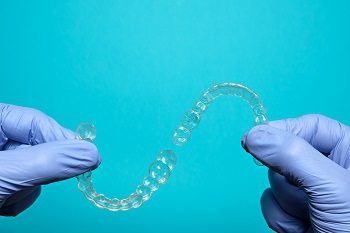Introducing Invisalign
Orthodontic treatment that straightens teeth into their correct position without the need for braces is commonly known as Invisalign. It consists of custom-made, clear braces that put the teeth in the appropriate place and align them gradually. Aesthetically, Invisalign clear braces have no metal brackets or wires, and functionally, they align the teeth half the time compared to traditional braces.
Whether you as a parent are exploring orthodontic treatment for your teenager or want to avail a discreet solution for yourself, Invisalign is an effective method to improve your smile. It is best for those who wish to have a hassle-free orthodontic treatment experience. Continue reading the article to find helpful information about Invisalign and its working principles.
What Is Invisalign Treatment?
The practice of using transparent, removable aligners to straighten teeth is known as Invisalign therapy. It helps transform your smile without worrying about brackets, wiring, or any other restriction that comes with metal braces. Invisalign is made from flexible plastic, which allows the tooth to restore its correct position.
The clear aligners are designed to exert the required force at the right place to straighten the teeth. The aligners must fit appropriately to fix dental health problems and reduce the discomfort of pain against the cheeks, gums, and tongue.
How Does Wearing Invisalign Feel Like?

Though Invisalign is comfortable to wear, however, one can expect to feel mild discomfort with the first set of aligners. This is because of the reason that the teeth are shifting to a new place and one needs to be tolerant while adjusting to the aligners. Similarly, the patients also feel some form of pressure, which usually fades away with time. However, never hesitate to visit your dentist if you feel unbearable pain or discomfort.
How Does Invisalign Work?
It works by fixing the teeth to their appropriate place. The aligners do this gradually and need to be worn for at least 20-22 hours a day. These aligners exert pressure on the patient’s teeth which needs to be fixed. One must change the aligners after every 1-2 weeks for the straightening process and for the final success of the treatment.
Can Invisalign solve Orthodontic Issues?
Many orthodontic issues can be fixed by Invisalign. For instance:
- Overbites.
- Underbites.
- Crooked teeth.
- Crowded teeth.
- Close gaps in the teeth.
- Crossbite.
- Open bite.
Though it also helps fix many dental issues, it cannot fix every problem. For example, a crooked tooth needs to be severely rotated for straightening purposes and can’t be fixed up by Invisalign. Similarly, significant gaps in the teeth or raising or lowering the tooth positioning in the jawline can’t be fixed.
Conclusion:
Invisalign is a straightening dental procedure that is more comfortable than traditional braces. It helps save time, and you do not need to make frequent dentist visits. The treatment time is shorter as well, which makes it an excellent choice over metal braces. Wearing a retainer after Invisalign treatment is helpful to keep your teeth in alignment.
Contact your Danville dentist, Dr. Hoss Abar, DDS, MSD at Danville Orthodontics to learn more about Invisalign.
Resource:
Deep Dental Cleaning Procedure
*Neither this nor any other content in this media is meant to prescribe, recommend, or prevent any treatment or procedure. We highly recommend that you get the advice of a qualified dentist or other medical practitioners regarding your specific dental condition.
